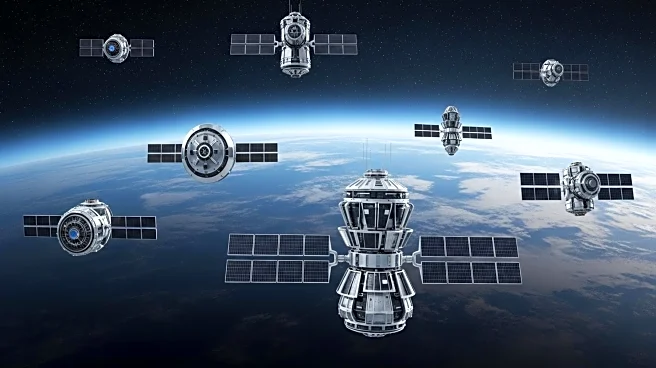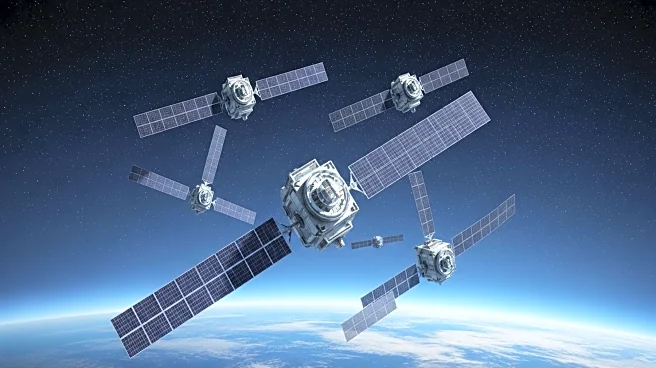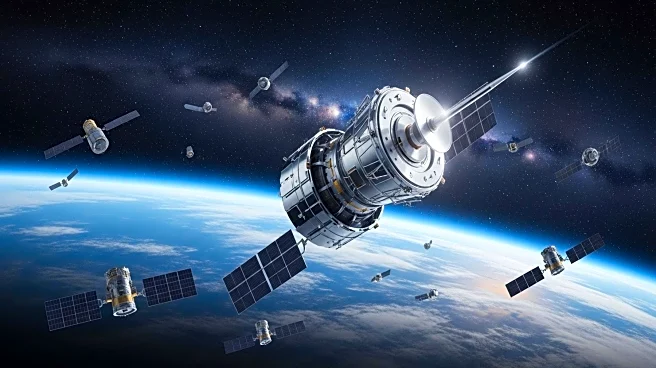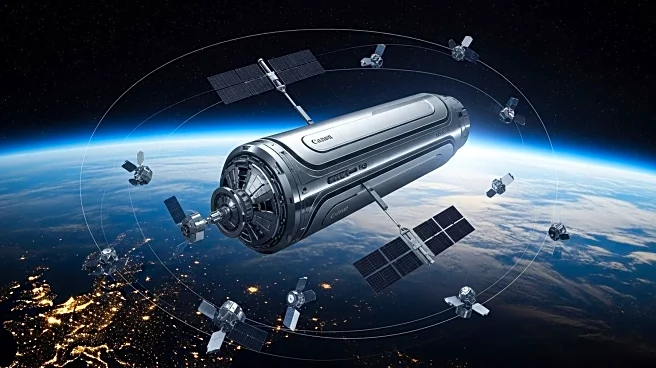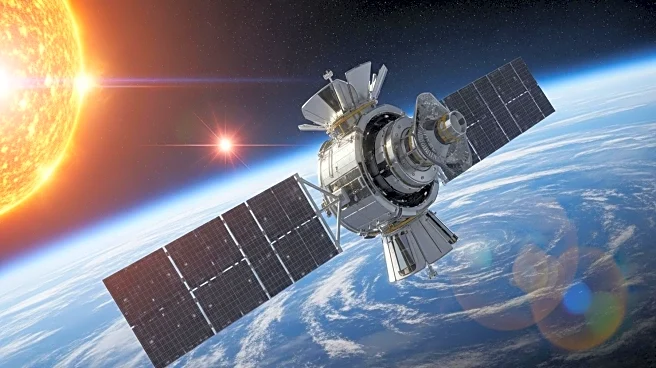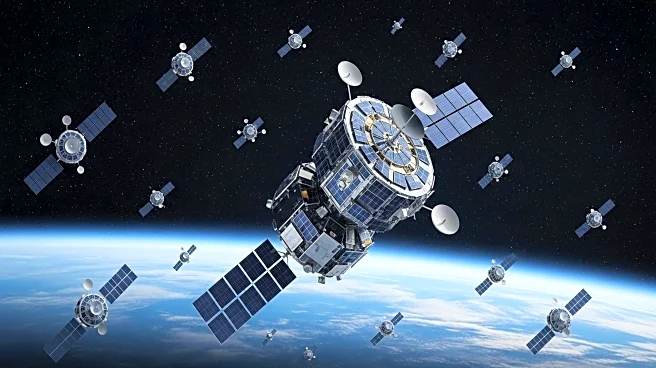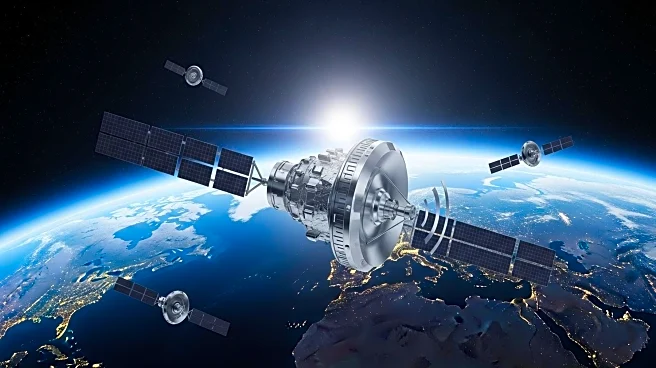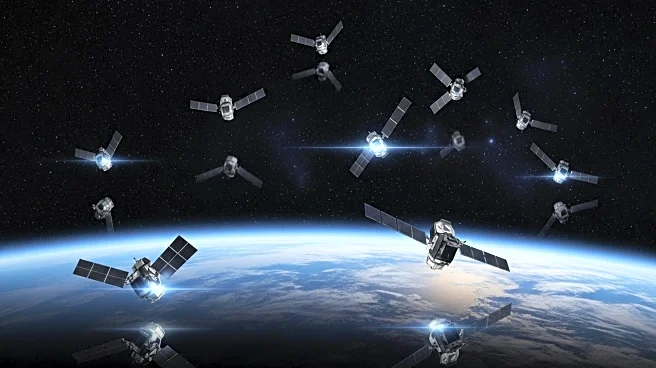What's Happening?
SpaceX successfully launched 28 Starlink internet satellites into orbit from Florida on September 25. The launch was conducted using a Falcon 9 rocket, which lifted off from Cape Canaveral Space Force Station at 4:39 a.m. EDT. The rocket's first stage returned to Earth approximately 8.5 minutes later, landing on the SpaceX drone ship 'A Shortfall of Gravitas' in the Atlantic Ocean. This mission marked the 22nd flight for the booster designated B1080. The upper stage of the Falcon 9 continued to transport the satellites to low Earth orbit, where they were deployed 64 minutes after launch. SpaceX has launched 122 Falcon 9 missions in 2025, with over 70% dedicated to expanding the Starlink megaconstellation, which now includes more than 8,400 active satellites.
Why It's Important?
The expansion of the Starlink satellite network is significant as it aims to provide global internet coverage, particularly in remote and underserved areas. This development could have profound implications for global connectivity, enabling access to high-speed internet in regions where traditional infrastructure is lacking. The growing network also positions SpaceX as a major player in the satellite internet industry, potentially disrupting existing telecommunications providers. The increased availability of internet access can drive economic growth, improve education, and enhance communication worldwide, making it a critical step towards bridging the digital divide.
What's Next?
SpaceX is expected to continue its aggressive launch schedule to further expand the Starlink constellation. As the network grows, SpaceX may face regulatory challenges and competition from other satellite internet providers. The company will likely focus on improving service quality and expanding its customer base. Additionally, SpaceX's efforts may prompt discussions on space traffic management and the environmental impact of large satellite constellations.
Beyond the Headlines
The rapid deployment of Starlink satellites raises questions about space debris and the long-term sustainability of satellite networks. As more satellites are launched, the risk of collisions and the creation of space debris increases, necessitating international cooperation and regulation. Furthermore, the expansion of satellite internet services could lead to geopolitical shifts, as countries with limited internet infrastructure gain access to global communication networks.

